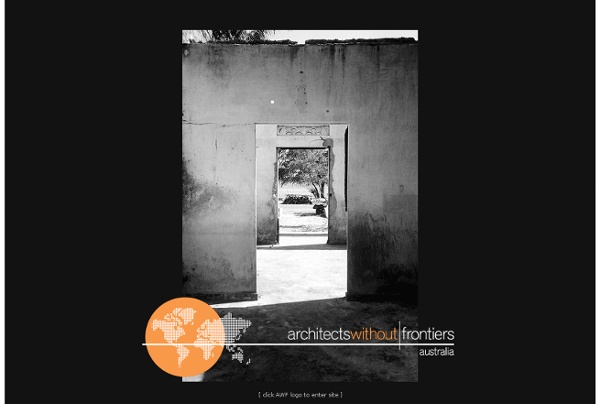



Architect in a foreign culture .: poems and poets :. .: classic poetry, world's largest critical poetry forums, poetry links from everypoet.com :. Architecture for Humanity Public Architecture Quotes and Famous Sayings - The Quotations Page Fred Cuny Frederick C. Cuny (born November 14, 1944 in New Haven, Connecticut) was an American disaster relief specialist who was active in many humanitarian projects around the world from 1969 until his forced disappearance in Chechnya in 1995. Life and career[edit] In 1952 Cuny moved with his family to Texas. Cuny became an accomplished civil engineer, working on large construction projects such as a radar installation at Dallas-Fort Worth International Airport. Humanitarian work[edit] In 1971 he founded the non-profit Intertect Relief and Reconstruction Corp. of Dallas, Texas, a relief mission technical assistance and training company. Disappearance[edit] In April 1995, Cuny and his team of two Russian Red Cross doctors and an interpreter disappeared in Chechnya while seeking to negotiate a ceasefire. Books[edit] Famine, Conflict and Response: A Basic Guide Frederick C. Media depictions[edit] In 2002 Harrison Ford was working on turning The Man Who Tried to Save the World into a movie.
UKUMBI NGO Using architecture to mitigate poverty Ukumbi ry is a Finnish non-governmental organisation established in 2007 by three Finnish architects. Saija Hollmén, Jenni Reuter and Helena Sandman have all extensive experience of development cooperation projects in several African countries. In the course of their work they realised that culturally knowledgeable and skilfully designed architecture is a tool that can be used to improve the living conditions of communities and to mitigate poverty. The mission of Ukumbi is to offer architectural planning and design for underprivileged groups. In addition to cultural sustainability, Ukumbi also seeks to create ecologically sustainable architecture. * ) Ukumbi is a Swahili word that denotes a public meeting place or forum.
ThinkOrSwim (the Climatechange.ie Blog) | Climate Change, Sustainability and Global Warming. Climatechange.ie Activities | The Cuny Center The Cuny Center has developed analysis, curriculum, training seminars and briefings relating to various aspects of humanitarian assistance, disaster management, emergency response and related topics. Below is a listing of past and current Cuny Center activities and publications. Please be sure to check the Publication pages to find downloadable documents and more information on Cuny Center activities. The Humanitarian Times Date: Current Partners: ReliefWeb, Congressional Hunger Center Publications: The Humanitarian Times Primary Cuny Center Researchers: Steve Hansch Description: Research and reporting on current humanitarian issues through the electronic mail publication, The Humanitarian Times. Preparedness Support Date: May, 2010 Primary Cuny Center Researchers: Casey Barrs Description: Humanitarian aid agencies can help beneficiaries, local staff and partners physically prepare themselves today for the violence they may face after we are separated tomorrow. Date: May 2003 Date: February 2003
BaseHabitat World Shelters green architecture notes » Favela-Bairro project: Jorge Mario Jauregui Rio de Janiero Sustainable cities require sustainable communities as well as care for the environment. Brazilian architect, Jorge Mario Jauregui has been working in Rio de Janiero for the last fifteen years to use his skills as an architect to bring infrastructure and community facilities to the informal communities throughout the city known as favelas. Favelas, which house about 20% of the city’s population, have been growing in pockets of unclaimed land throughout the city for the past 100 years. However, since unplanned and originally unsanctioned by the government, these communities lack infrastructure and public social spaces. Jorge has coined the phrase “favela-barrio” to describe his approach to urban design in the favelas. Literally translated as ‘slum-neighborhood’, it expresses the idea that these informal developments, or shanty towns, are here to stay and are thriving communities; and with some infrastructure and public space can be transformed into neighborhoods.